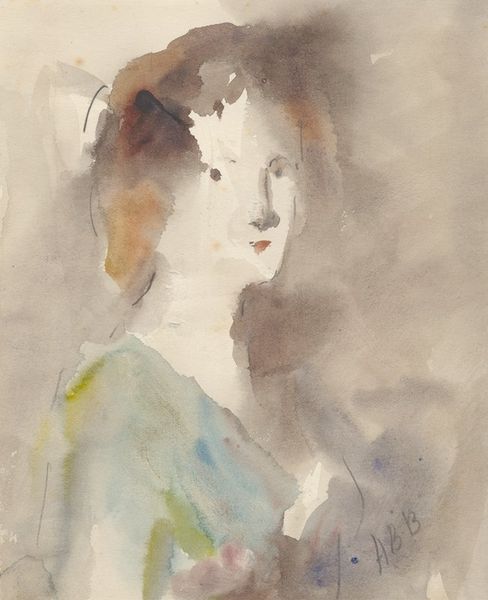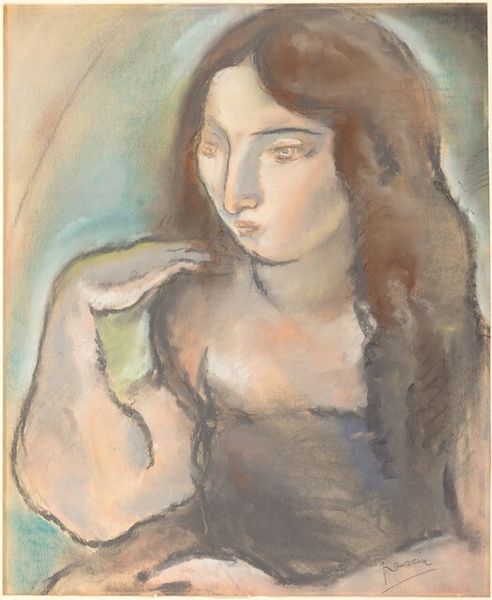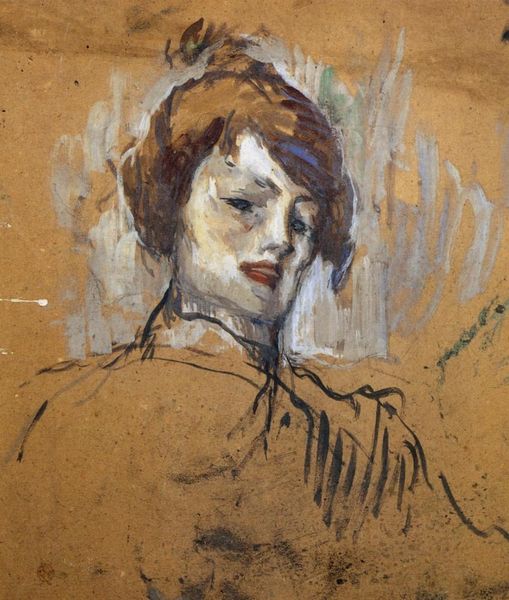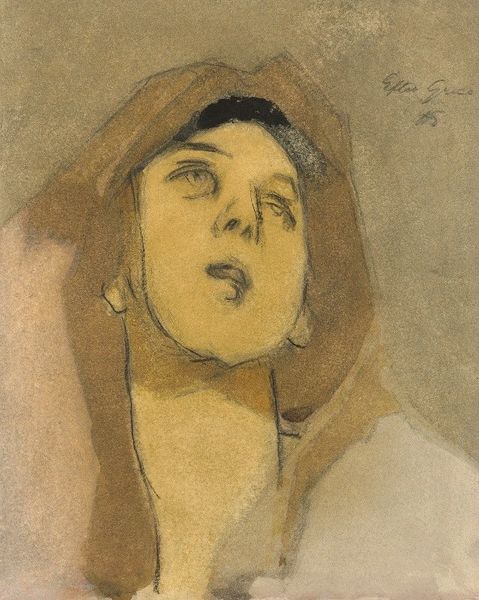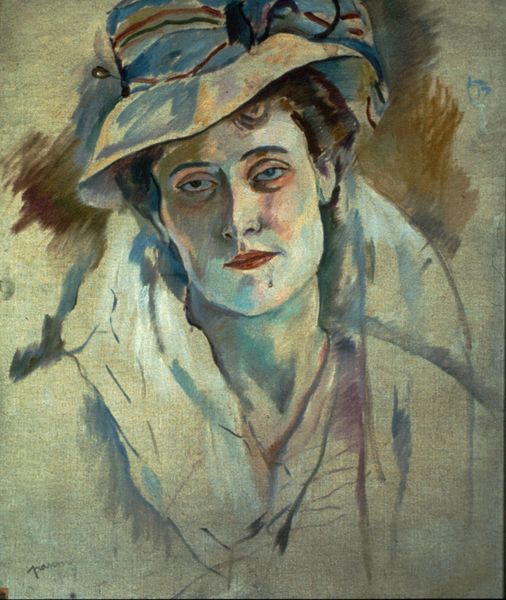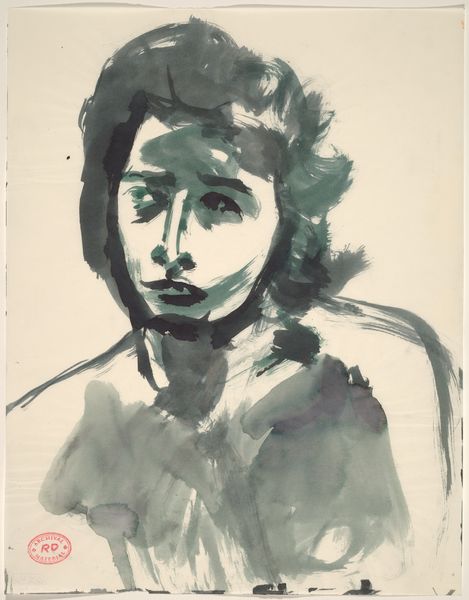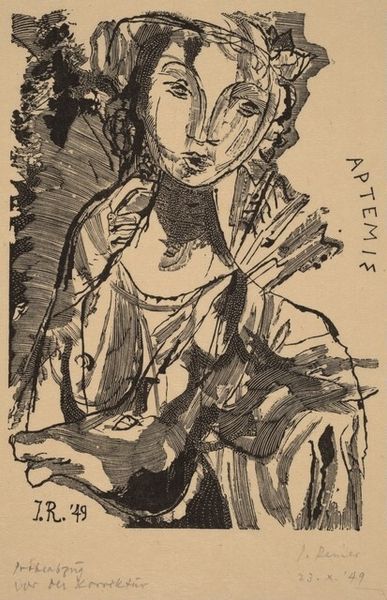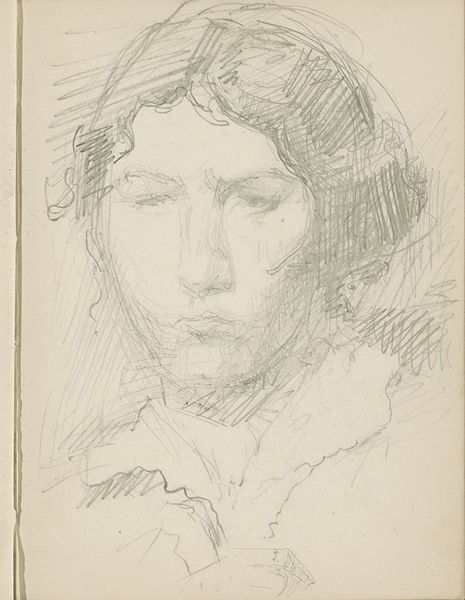
Copyright: Public Domain: Artvee
Curator: Today we’re looking at Edvard Munch’s "Female Head," a watercolor piece created sometime between 1932 and 1942. Editor: It’s immediately striking how… unfinished it feels. The colors are pale, almost faded, and the figure seems to dissolve into the background. Curator: It is fascinating to see how the museum context elevates even sketches into objects of public interest. We are invited to contemplate not only the image but its place within Munch's broader output. The fluidity and abstraction become more prominent viewed from the perspective of museum representation. Editor: I think that's a really crucial point. It shifts our gaze to his inner world, his process, rather than demanding perfection or completion. I see this woman, rendered in blues, greens, purples… and I feel a deep connection to melancholy, perhaps exhaustion. Curator: It seems that this connects to wider considerations of the reception of art. Does our own state, influence the way we see a piece? This also connects to feminist art theory in that there is an argument for artwork not completed to idealize women, thereby being harmful. Editor: Absolutely! Especially given the art-historical tendency to overly idealize the feminine. And, as an activist, I can't help but see parallels in today’s world. I wonder about the constant pressure for women to maintain flawless exteriors, while inside there's so much fatigue. Munch seems to have captured something that's universally, and tragically, relevant. Curator: It underscores that these kinds of images gain resonance, not merely as reflections of a particular era, but as documents open to reinterpretations, through lenses of political understanding, within a long history. Editor: It also underscores how important museums are to preserve artworks like these, that without completion still evoke great interest and spark debate through the political perspectives, within a wide range of intersectional discourse, hopefully helping viewers consider the past while thinking critically about the future. Curator: Precisely, art is about both the tangible object and the social forces that frame it. Editor: Absolutely, this one, seemingly simple watercolor has provoked a deeper examination for me. Thanks!
Comments
No comments
Be the first to comment and join the conversation on the ultimate creative platform.
